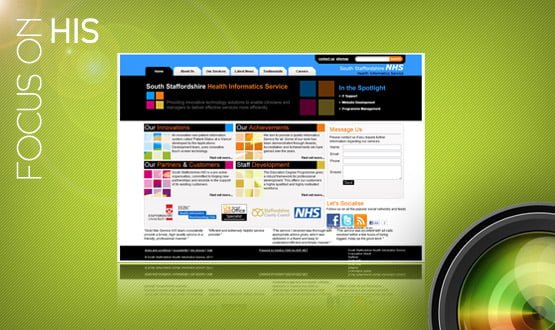EHI focus on: South Staffordshire HIS
- 6 March 2012

South Staffordshire Health Informatics Service is expecting the first graduates from its education degree programme within the next academic year.
Director of health Informatics Douglas McLay says the programme was set up because he found, when he started work in 2001, that a large number of its staff did not have any formal qualifications.
This was not unusual in the IT industry and NHS support services, but he believed that a lack of education was affecting the HIS’s performance.
Staff can now do a part-time degree funded by their employer via remote access learning at Staffordshire University. They gain academic credits by writing up their HIS work as projects, so their time away from work is minimal.
The project has been running for two years with 60 staff involved. McLay expects the first students to graduate either this academic year or next.
You pay for what you get
The programme is part of McLay’s belief that having the “right workforce with the right skills and knowledge is key to being competitive.”
South Staffordshire HIS is a not-for profit organisation that was formed in 2001. It is a full, shared service model partnership owned by four organisations in South Staffordshire that provides services to the whole local health economy – all trusts and GPs – and has about 15,000 users.
It has also branched out to provide services to other customers. It has built a partnership with Staffordshire County Council that has led to a ground-breaking agreement to share one network system.
McLay says the business model was running successfully until “fairly recently”. But while the organisation could previously rely on the custom of its NHS owners, it is now operating in a world where private companies can – and are – running NHS ICT services, and newly created CCGs will be able to buy commissioning support from wherever they choose.
One tool that McLay believes will help the HIS to compete in the new commissioning environment is the service’s cost model, which means organisations only pay for the level of services they use.
This means there is a closer relationship between what organisations pay for and the benefits they get. McLay says it took a long time to get everyone to agree to the new model, which was finally implemented two years ago.
“It’s quite a big deal getting a cost model in place. This pre-dates the current environment, but I could see the pressure building up in the market place under the old system – for organisations to pay for what they get – and growing unhappiness that people weren’t paying the right amount.”
Clusternomics
McLay says one of the challenges of operating under the latest round of NHS reforms is that the South Staffordshire local health economy no longer exists, as it has been rolled into a cluster.
Under the old system, the local primary care trust had a clear responsibility for coordinating and delivering health informatics. Now, it is not clear who has this role – and whether it will be taken on by another organisation in the future.
McLay says that achieving synergy across a local health economy will be hard to replicate without a single planning organisation.
He also argues that it is important to keep the experience gained with the successful shared service models.
“There’s almost a feeling that rather than use existing shared services in place, clusters nationwide are building shared services for themselves, but not looking at what the total health economy infrastructure needs to be,” McLay says.
“We have ten years’ experience of governance, business management and delivery of a shared service – that’s something that takes a lot of building up.”
No decisions have been made about future arrangements for South Staffordshire, but McLay says it is “far from a given” that existing services will be used; and other HIS’ are reporting similar issues.
“One of the things some of the provider trusts are concerned about is that they benefit from the cost savings of having a shared service operating across the local health economy,” he adds.
On the information and analysis front, the HIS provides a series of automated reports to the provider arm of the PCT and the mental health trust, including activity reporting, statutory reporting and internal management reports.
McLay says its data warehouse has the capability to provide the kind of reports that will be required by CCGs.
“I don’t think, initially, we’ll be given the opportunity to compete for that work in our own cluster because the cluster has set up a commissioning support organisation, which we are not part of,” he adds. “But we do intend to compete for it in other areas because we have the capability.”
He is not interested in having “out-bases across the country”, but could also look to provide additional services where a physical presence is not required – such as online training and hosting servers.
Looking for a future
The HIS has hopes to extend the Public Service Network it is creating with the council to other local services, such as fire and police.
“It will make providing ICT services to the social services sector much easier because we’re coming much closer together and it’s about 40% cheaper than what we were doing before,” McLay says.
The HIS already had a collaboration agreement with the council for ICT services, as many of the council’s social workers have become NHS employees over recent years.
This means they need smart cards and access to NHSmail and N3, while still working on council sites. The HIS staff are NHS employees and McLay believes it will stay that way.
“There’s no reason why we would move out of the NHS. The issue more is what’s our role going to be and who are we going to be providing services to.
“Are we going to be able to continue providing services to the people left in our customer base at a level acceptable to them?” he asks.
“I don’t know what the answer is. There isn’t any guidance on the future of IT services as the strategy hasn’t been published yet, it’s being made up as we all go along.”
Link: There is more information about the HIS and its work on its website.




